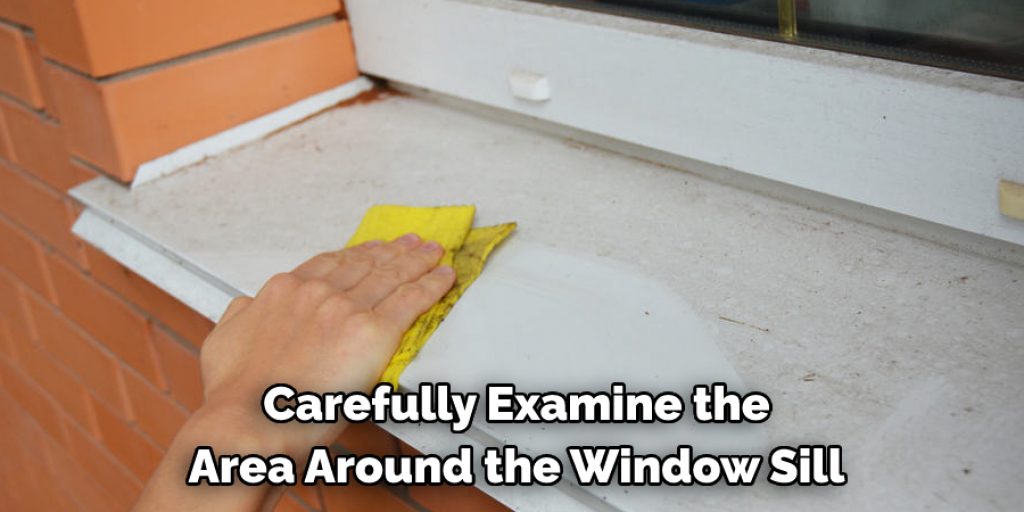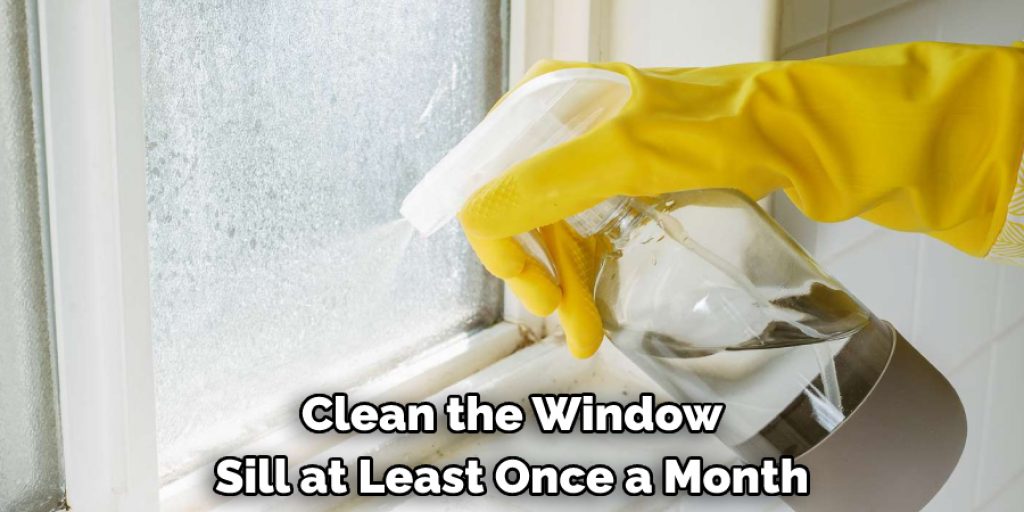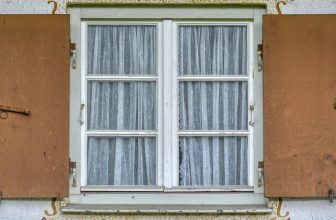How to Remove Mold From Window Sill
Mold can cause significant damage to your home and its surroundings. It can grow on walls, floors, furniture, window sills, and other surfaces. Mold spores are microscopic and float through the air, settling on damp areas such as window sills, where they spread quickly. If left unchecked, mold can spread rapidly throughout your home or workplace, leading to serious health risks. It is important to remove any mold from window sills as soon as you notice it in order to prevent further damage and the spread of harmful spores.

One of the main advantages of removing mold from window sills is that it can help to reduce the risk of health hazards. Airborne mold spores commonly cause allergic reactions and other illnesses, including respiratory problems and asthma. By eliminating the presence of mold on window sills, you can improve air quality in your home or workplace and reduce the chance of developing any health issues associated with mold. In this blog post, You will learn in detail how to remove mold from window sill.
Step by Step Processes for How to Remove Mold From Window Sill
Step 1: Inspect the Area
Carefully examine the area around the window sill to identify any mold present. Make sure to use personal protective equipment, such as a face mask and gloves, so that you won’t be exposed to spores. If possible, open the windows and doors in the room to ensure proper ventilation while cleaning.

Step 2: Vacuum the Area
Remove any visible mold from the window sill and surrounding area using a vacuum cleaner. Make sure to use an attachment designed for cleaning small spaces like crevices and corners. Mix equal parts white vinegar and water in a spray bottle. Spray the moldy area on the window sill and allow it to sit for 30 minutes.
Step 3: Wipe Down with a Clean Cloth
After 30 minutes, use a clean cloth to wipe away any remaining mold or mildew. Discard the cloth when you’re done. Mix two teaspoons of baking soda with a small amount of water to make a paste. Spread the paste onto the window sill and let it sit for 30 minutes.
Step 4: Scrub Away with a Brush
Once the baking soda paste has had time to work, scrub away any remaining mold or mildew using an old toothbrush or a soft bristle brush. Use a wet cloth to rinse away the baking soda paste, then dry the area with a towel or microfiber cloth.
Step 5: Sanitize the Window Sill
Once everything is clean and dry, spray the window sill with a sanitizing solution such as hydrogen peroxide or bleach. Allow it to sit for five minutes before wiping away any residue. Once the window sill is dry and sanitized, replace any window coverings you removed during cleaning. This will help prevent new mold from forming in the future.

With these steps, you can easily remove mold from window sills and keep them clean and healthy. Remember to use personal protective equipment when dealing with mold and mildew, as it can cause health problems if inhaled or touched.
Safety Tips for How to Remove Mold From Window Sill
- Wear protective gear such as a respirator mask, eye protection, and rubber gloves before starting the process of removing mold from a window sill.
- Open windows to increase ventilation in the room and prevent the spread of spores throughout other parts of the home when removing mold from a window sill.
- Remove any furniture, drapes, or other items away from the mold-growing area.
- Vacuum the mold off with a HEPA filter-equipped vacuum cleaner to avoid spreading spores.
- Mix one part bleach with four parts water and apply liberally to the window sill, using a scrub brush to scrub away any remaining mold lightly.
- Rinse the area with warm water and allow it to air dry completely.
- Seal the window sill with a quality sealant to prevent future mold growth.
- Clean often and check periodically for signs of mold on window sills to catch it early on before it is able to spread further in the home.
By following these safety tips, you can effectively and safely remove mold from window sills and keep your family healthy. If you have any questions or need help with removing mold from a window sill, contact a professional for assistance.

How Can You Prevent Future Mold Growth on Your Windowsill?
After successfully tackling mold growth, it is important to take steps to prevent future mold from occurring on your windowsill. Here are a few tips that can help you keep your windowsill clean and free of mold:
- Keep the air circulating in your home by using fans or open windows; this will reduce humidity levels as high levels of humidity encourage mold growth.
- Clean your windowsill regularly, at least once a week; use a damp cloth and appropriate cleaner to remove any dirt or debris that may contribute to mold growth.
- Seal any cracks or spaces in the window frames and sills with caulk; this will prevent moisture from accumulating and reduce the chance of mold growth.
- Check regularly for any signs of water damage; if you notice water stains or pooling on your windowsill, it is important to address the issue as soon as possible to avoid mold growth.
By taking these steps, you will be able to avoid future mold growth on your windowsill and keep it looking clean and fresh.
How Often Should You Clean Your Window Sill to Prevent Mold Growth?
To prevent mold from growing on your window sill, you should clean the window sill at least once a month. This includes wiping down the sill with a damp cloth to remove any dirt and dust particles that could otherwise lead to mold growth. Additionally, you can also open the windows for a few hours each day to allow air circulation in order to reduce the chances of mold growth. You should also regularly check the window sills for signs of mold, such as discoloration or a musty smell. If you find that there is some mold present, then it should be cleaned immediately using one of the methods outlined above.

By following these steps and cleaning your window sill regularly, you can prevent the growth of mold and keep your window sill looking fresh. It is also important to ensure that your windows are properly sealed to reduce the likelihood of moisture buildup and mold growth. If you have any questions or concerns about removing mold from your window sill or other areas of your home, then it is best to consult a professional who can provide the best advice. With proper cleaning and maintenance, you can ensure that your window sill remains mold-free for years to come.
Are There Any Health Risks Associated With Breathing in Mold Particles From a Window Sill?
Yes, there is a risk associated with breathing in mold particles from a window sill. Mold particles are known to contain toxins, which can cause respiratory and allergic-type reactions in humans. Additionally, the spores produced by molds can spread through the air, and if inhaled, they may cause fever, chills, headaches, and other flu-like symptoms. Therefore, taking precautions when cleaning mold from a window sill is important, such as wearing protective clothing and a respirator. If you suspect that you may be at risk of health problems due to the presence of mold in your home, please contact your doctor or local public health department for further advice.
It is also important to take steps to prevent mold from growing on your window sill. This can be done by ensuring that the area around the windowsill is properly ventilated, and that any water damage is quickly addressed and repaired. Additionally, using dehumidifiers or air conditioners may help reduce the air’s moisture and discourage mold growth.
Conclusion
The primary downside of removing mold from window sill is that it requires significant time and effort. Additionally, if the infestation is severe, the process may need to be repeated multiple times in order to eradicate the mold completely. Another disadvantage is that some methods involve toxic chemicals, which can be hazardous when inhaled or touched.
In conclusion, it is important to understand how to remove mold from the window sill properly. Mold can be an unsightly and potentially dangerous issue that can cause health concerns for you and your family. The best way to prevent the growth of mold on your window sills is by regularly cleaning them with a solution of water, vinegar, and baking soda. I hope reading this post has helped you learn how to remove mold from window sill. Make sure the safety precautions are carried out in the order listed.




